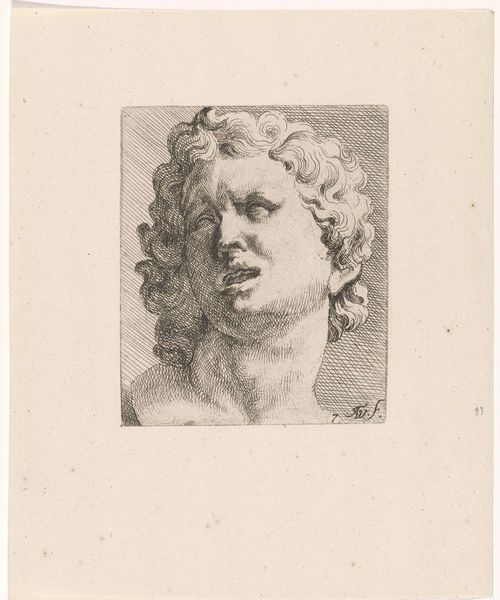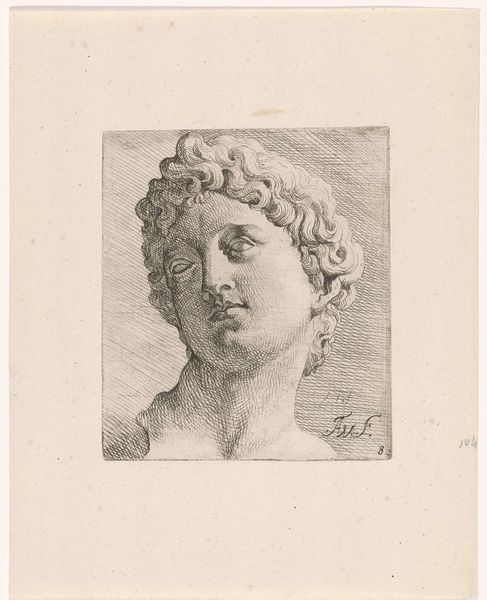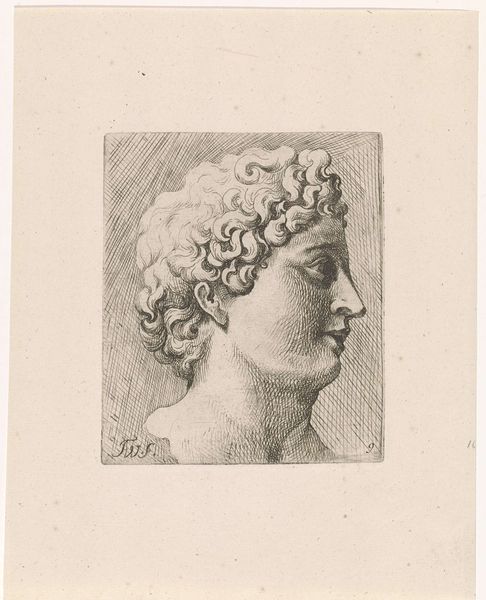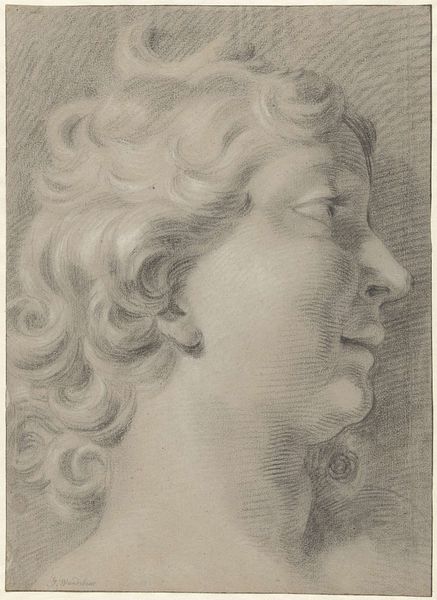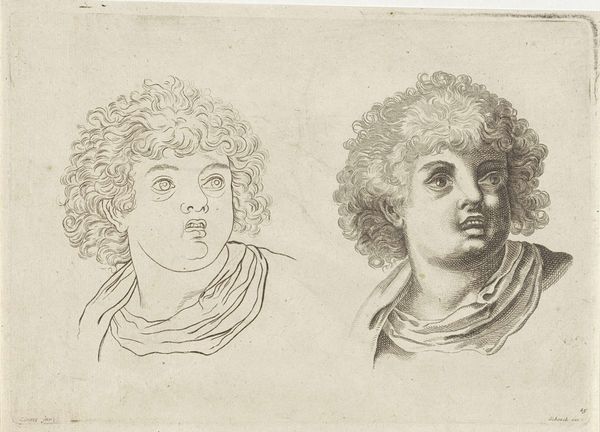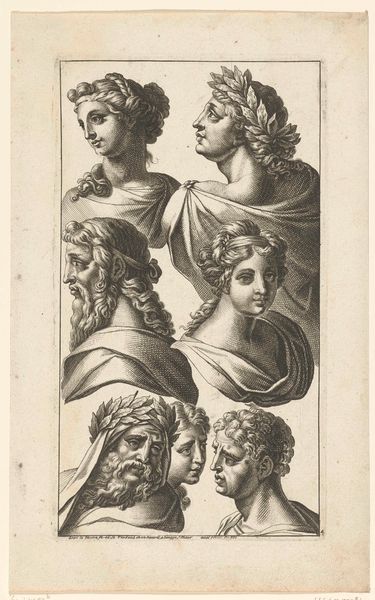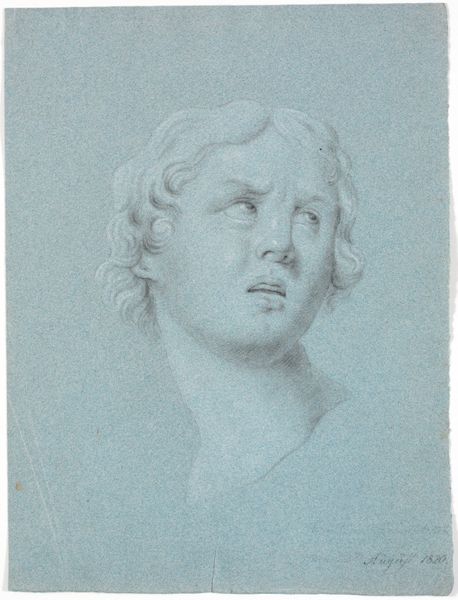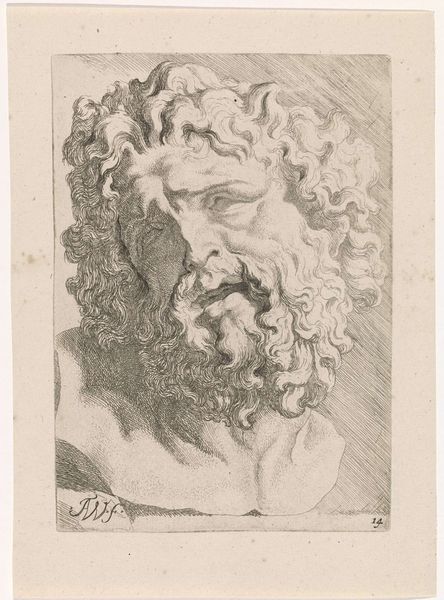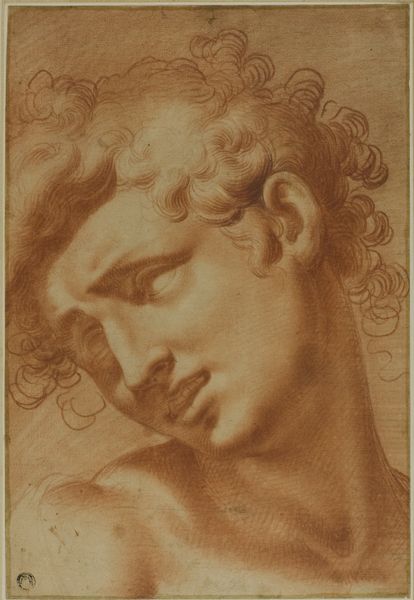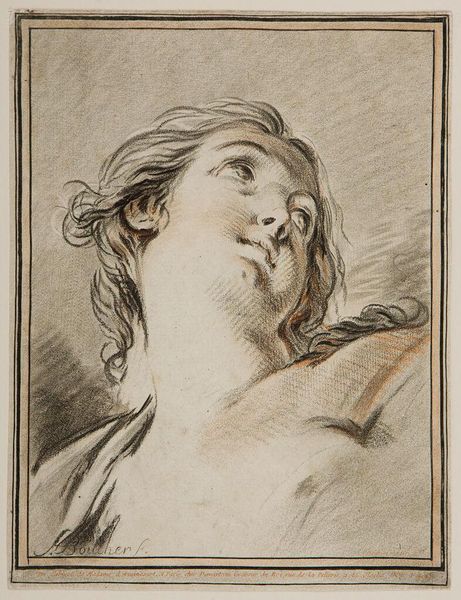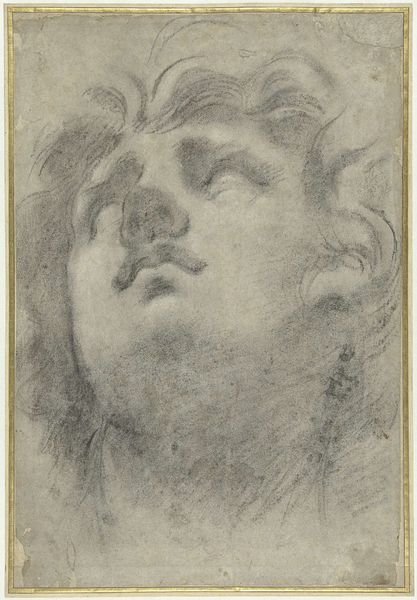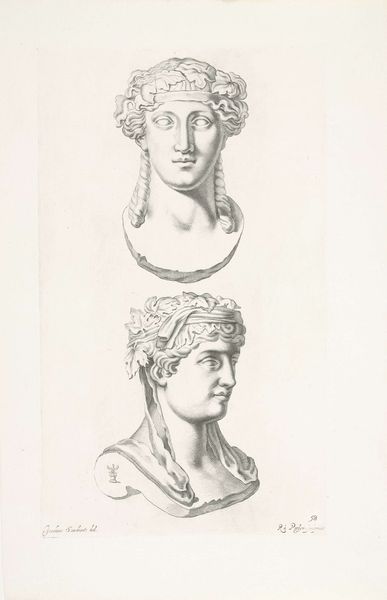
print, etching
#
portrait
#
baroque
# print
#
etching
#
figuration
#
history-painting
#
academic-art
Dimensions: height 200 mm, width 89 mm
Copyright: Rijks Museum: Open Domain
Curator: This etching by Augustinus Terwesten I, dating from 1672-1711, showcases “Twee hoofden van Niobe”—Two Heads of Niobe. What strikes you initially? Editor: Melancholy, definitely melancholy. Both heads, though facing different directions, seem burdened, even in their stillness. The material, the etching itself, enhances that somber mood. Curator: Indeed. Terwesten’s technique employs cross-hatching and fine lines to create tonal variations and model the forms, typical of Baroque printmaking. The academic art style also suggests an emphasis on idealization and classical subject matter. Editor: The story of Niobe herself resonates with sorrow. A queen who boasted of her numerous children, inviting the wrath of the gods, who then slew them all. These heads, perhaps, capture her enduring grief. It is such an enduring and heartbreaking story, with implications for power and gender roles. Curator: Exactly, this print may very well represent studies for larger history paintings. Artists would create prints of classical sculptures and figures to internalize these ideal forms. Editor: Do you believe that access mattered in those years as well? Was it about who could understand classical allegory, for example? It strikes me that the circulation of such imagery was also likely connected to social hierarchies and intellectual privilege. Curator: The accessibility of prints certainly aided the transmission of artistic ideas, contributing to academic trends that would disseminate across wider audiences, in comparison to painted renderings available only to select elite circles. Editor: Seeing it from a different perspective—prints are quite easily accessible, compared to the sculptures, of course. So, in a way, even if this wasn't the artist's intention, such an etching can be seen as a tool to allow broader audiences access to and become more intimate with classical art and culture. Curator: Precisely. This piece exemplifies how prints could democratize art appreciation even as it upheld established aesthetic principles. Considering it is on display at the Rijksmuseum, viewers should certainly experience the technical skill in person. Editor: Well, examining it has offered a reminder about both artistic skill and the sad stories we tell across time, and of the unequal distribution of art in societies past, as well as its impact.
Comments
No comments
Be the first to comment and join the conversation on the ultimate creative platform.
